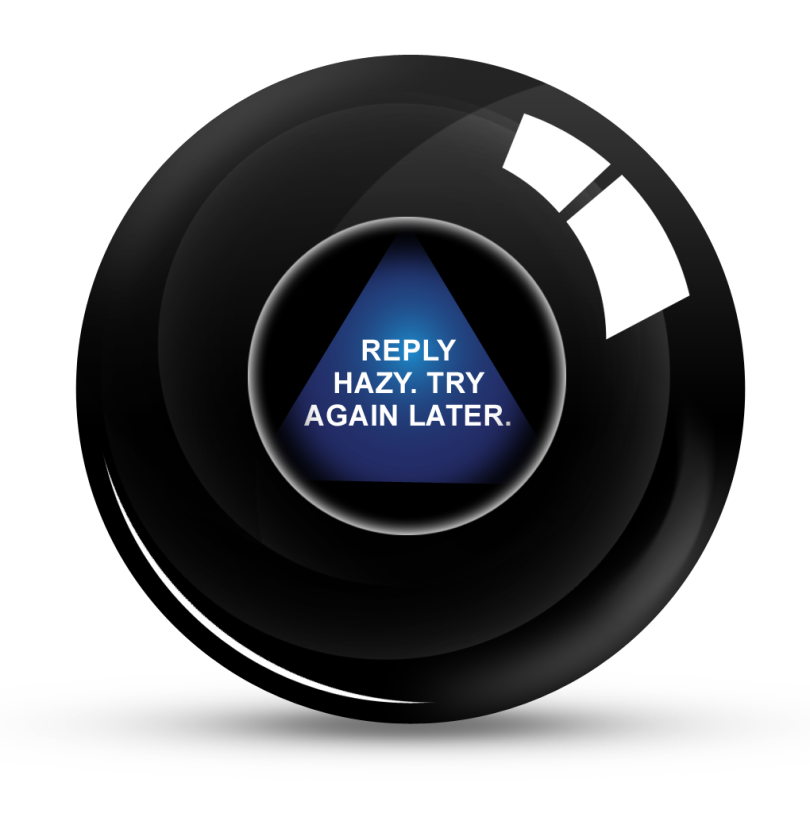How many of you struggle to define and describe our era? I’ve written many different descriptors — “time of crisis,” “interesting times,” “difficult times,” “uncertain times.” While none of these phrases adequately captures the scale of change we’re going through, all point to the collective sense of ambiguity we’re experiencing alongside the undeniable pain and upheaval.
From the pandemic to the movement for racial justice to the economy, we don’t yet have an accurate view of all that is going on and how it’s rapidly changing. As an organizational leader, I sometimes feel unmoored and confused about how to proceed. My new joke is that I’m using my kids’ Magic 8 Ball as a guide during our planning processes — and sometimes it doesn’t feel that far from the truth.
Then I remind myself of one of my favorite concepts as a leadership development trainer — the ability to develop a comfort with ambiguity. While the scale of uncertainties right now is certainly more immense, leaders often find themselves in ambiguous situations without clear answers or direction. As I work with participants in Coro’s leadership programs, I strive to help them see these moments as opportunities to develop a comfort with ambiguity so they’re better prepared for difficult circumstances.
How do you build and strengthen this capacity? These Coro tools and mindsets can help all of us navigate this moment.
Assess the WIGO (what is going on). When confronted with ambiguity, we need to assess the situation. What are we experiencing? How are we feeling emotionally in response to the situation? (Remember, feelings are data, too.) What may others be feeling and experiencing? Cultivating an awareness of the situation, and compassion for ourselves and others, can help us understand the different factors at play.
Ground yourself and others in shared facts. At Coro, we teach people to be aware of FIAO (facts, inferences, assumptions, and opinions) so that they can distinguish between them and ensure their decisions are influenced primarily by facts and verifiable data. What are the facts that you do know in the ambiguous situation? What are the shared agreements and data that all involved need to understand? How can you work to establish a shared set of facts and data (including feelings) that all parties have access to? This is an opportunity to make the implicit explicit.
Use inquiry and avoid “why” questions. Inquiry is at the heart of Coro leadership tools, and it is critical in times of uncertainty and ambiguity. We encourage using 4WH questions – who, what, when, where, and how. These questions help unearth more facts and allow us to get as much observable and verifiable information as possible. “Why” is a critical question because we want to know motivation and root causes, but we encourage participants to avoid asking it because it’s broad and can put the recipient on the defensive. Instead, we want people to consider the specifics of what they want to know, and refine their questions. It’s about shifting from, “Why did you do that?” to, “What motivated you?” Or, “What was the process for the decision?” Or, “Who else was consulted?” Using 4WH – and avoiding “why” questions — elicits specific information that moves us closer to clarity.
Be aware of DKDK (don’t know what you don’t know). If we’re lucky, we have a strong set of facts for reference (what we know). Inquiry allows us to expand our knowledge and fill in our curiosities (what we know we don’t know). But we don’t know what we don’t know. In many situations, there are likely large gaps or mistaken assumptions in our thinking — areas of which we are unaware. These gaps may hinder decisions or lead us in the wrong direction. Understanding that there are a vast number of perspectives and ideas that we’re not considering can help leaders be more inclusive and hold our conclusions a little less tightly. This is also a space for leaders to welcome and consider others’ feelings and opinions. If we’re aware that we don’t know what we don’t know, then we are more likely to be open to change — and more accommodating of adjustments as we navigate ambiguous situations.
Decide in advance how to decide. As information changes rapidly, it’s difficult to make decisions quickly and consistently. We may be emotionally invested in a particular outcome or event, which may create stress and frustration when we need to swiftly adapt. Take time to think about what your decision-making process will include — before the decision is upon you. Create a framework in advance that you can reference and apply when needed. What are the parameters for your decision? What information will you reference? Who are your trusted sources? What roles will people play in the decision? What is the timeline? Considering these questions in advance allows you and your team to stay centered. You can adjust the parameters as necessary, but having the framework in place will allow for conscious and transparent decisions.
While there is no “right path” in many situations, these tools can help you choose a path that you feel confident in — and reduce reliance on your Magic 8 Ball. I just checked mine and it concurs: “All signs point to yes.”
Courtney Young-Law is Coro’s Vice President of Programs and Leadership Training. She is spending the current moment in learner mode and building her comfort with ambiguity. Visit our programs page to learn more about Coro’s leadership development programs.
